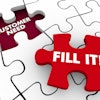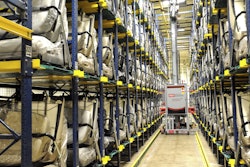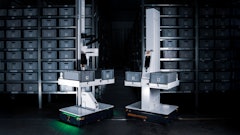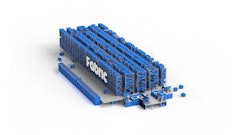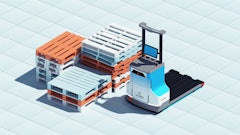
From labor shortages to port strikes, supply chain disruptions are frequent, inevitable and can have widespread, long-term impacts on businesses of any size. When coupling these unpredictable challenges with customers’ growing expectations, it makes retailers lives increasingly difficult. To consistently deliver fast, personalized shopping experiences in 2025 and beyond, retailers must finetune their fulfillment strategy – and look no further than micro-fulfillment.
Upleveling Supply Chain Strategy with Micro-Fulfillment
Micro fulfillment centers (MFC) are small warehouses and picking centers situated closer to end consumers, allowing for quicker delivery while mitigating unexpected disruptions and upleveling the overall customer experience (CX). MFCs strive to maximize efficiency along the last mile - one of the make-or-break phases in e-commerce logistics. Deploying and finetuning micro-fulfillment can help retailers:
- Overcome transportation hiccups: In 2024, we were face-to-face with persistent transportation delays triggered by many factors, like extreme weather events and geopolitical issues. Micro-fulfillment can help retailers shorten the journey from the warehouse to end consumers, leaving less room for shipping-fueled hiccups and helping to meet customers’ desire for quick fulfillment.
- Build customer trust: Fifty-six percent of online consumers between 18 and 34 years old expect same day delivery. By positioning inventory closer to “hot spot” areas for consumer demand, retailers can better meet shoppers’ sky-high expectations. Consumers are more likely to shop with a brand that guarantees they will get their products delivered quickly and right to their doorstep.
- Satisfy customers’ need for instant gratification: The instant access consumers get by entering a store and purchasing a product can be difficult to emulate in the online environment. However, with micro-fulfillment, retailers can offer their customers a similar shopping experience by pairing the appeal of having products in real-time with the convenience of having them delivered.
- Outshine competitors’ service levels: Micro-fulfillment can help retailers improve their sales success, allowing them to offer multiple channels and enabling them to curate their inventory and stock keeping units (SKU) to align to the specific shopping preferences of that region. For example, if a winter gear retailer positions their fulfillment center near consumers in colder climates, they will provide fast delivery times, thus generating sales and customer satisfaction.
- Drive a more climate-focused operation: According to recent data from Körber Supply Chain Software, 40% of consumers choose where to shop based on the brand’s commitment to sustainability. Micro-fulfillment is a great place to start. MFCs offer a pragmatic approach, shortening the delivery distance, lessening the amount of fuel used, reducing carbon emissions produced and ultimately making the shopping experience more environmentally friendly.
While deploying a micro-fulfillment strategy is appealing, it can be difficult to roll out successfully and seamlessly - but it’s not impossible. It just takes a strategic, educated approach.
Developing the Right Micro-Fulfillment Strategy
When trying to implement a micro-fulfillment strategy, it can be challenging for retailers to establish the “how” in the execution while simultaneously maintaining efficient back of store operations. The first step is to find and deploy a supply chain execution platform that can help facilitate micro-fulfillment. From there, best practices for implementing micro-fulfillment include:
- Utilize supply chain execution infrastructure to assess capabilities: Visibility is key for deployment. Retailers must have a clear picture of the company’s ability to carry out a micro-fulfillment strategy and understand how this strategy can reshape current processes.
- Integrate existing technologies to understand multi-channel fulfillment possibilities: For micro-fulfillment to be successful, companies must ensure they are leveraging all their available technology to perfect the strategy. For example, warehouse management systems (WMS) and transportation management systems (TMS) can connect and streamline processes. Specifically, WMS can help organizations stay abreast of inventory across multiple locations, dictate the optimal location for fulfillment, and manage both carrier selection and costs.
- Adopt adaptable technologies with a focus on process-driven underpinnings: When looking to develop a micro-fulfillment strategy, it is important for companies to evaluate legacy systems and conceptualize where upgrades can be made to propel and sustain long-term success.
- Invest in technology and solutions that will augment the human workforce: Micro-fulfillment will likely change the roles of backroom employees; therefore, it is crucial to not only invest in technologies, for macro supply chain operations, but also ones that will support retail employees on the micro-level at fulfillment centers.
Changing the Process Today to Mitigate Disruption Tomorrow
While implementing and executing micro-fulfillment requires significant investment, the benefits for the business and customers outweigh the cost in the long-term. With unpredictable supply chain disruptions and changing customer demands, it is critical that retailers deploy a successful fulfillment strategy with micro-fulfillment. Retailers - now is the time.



